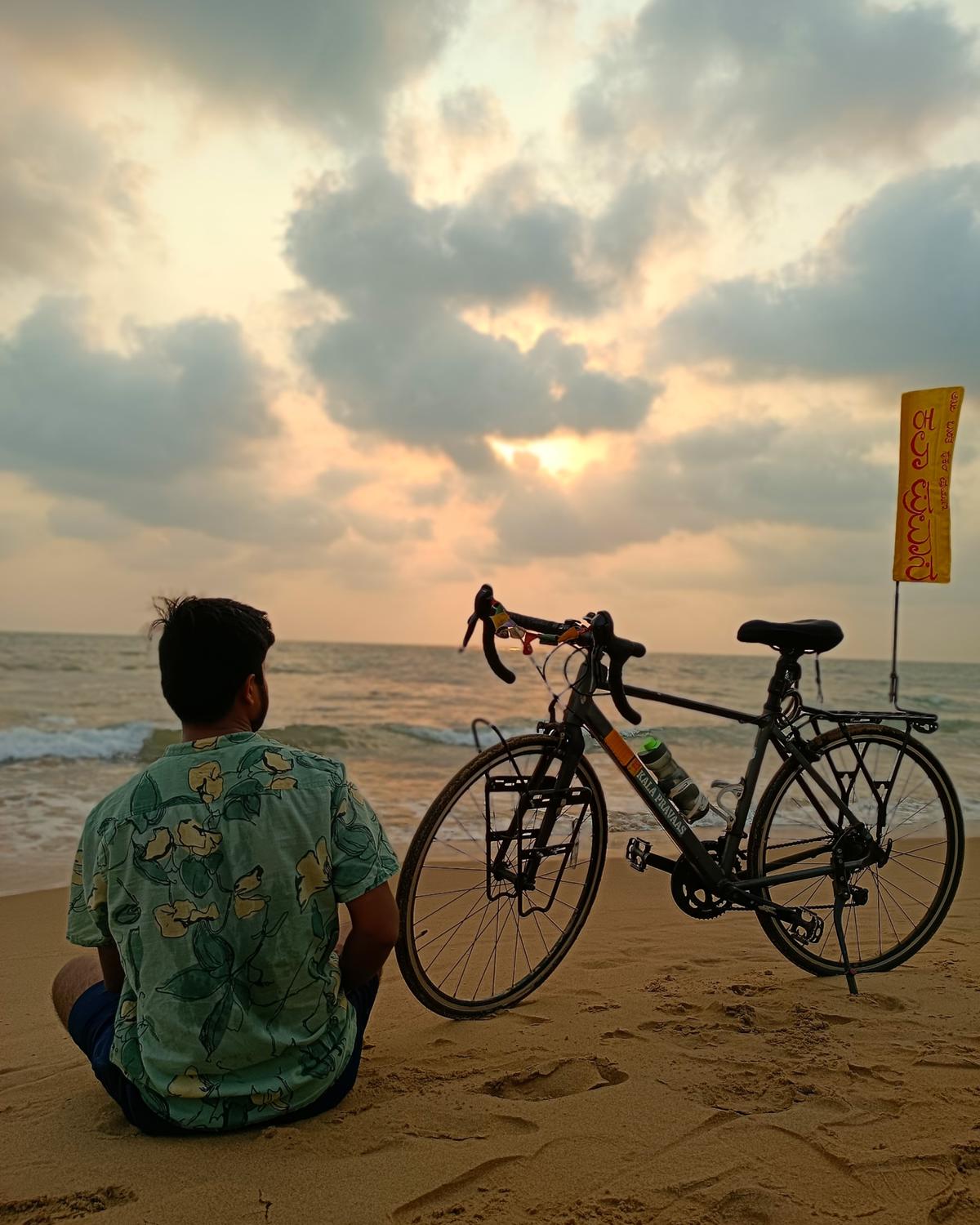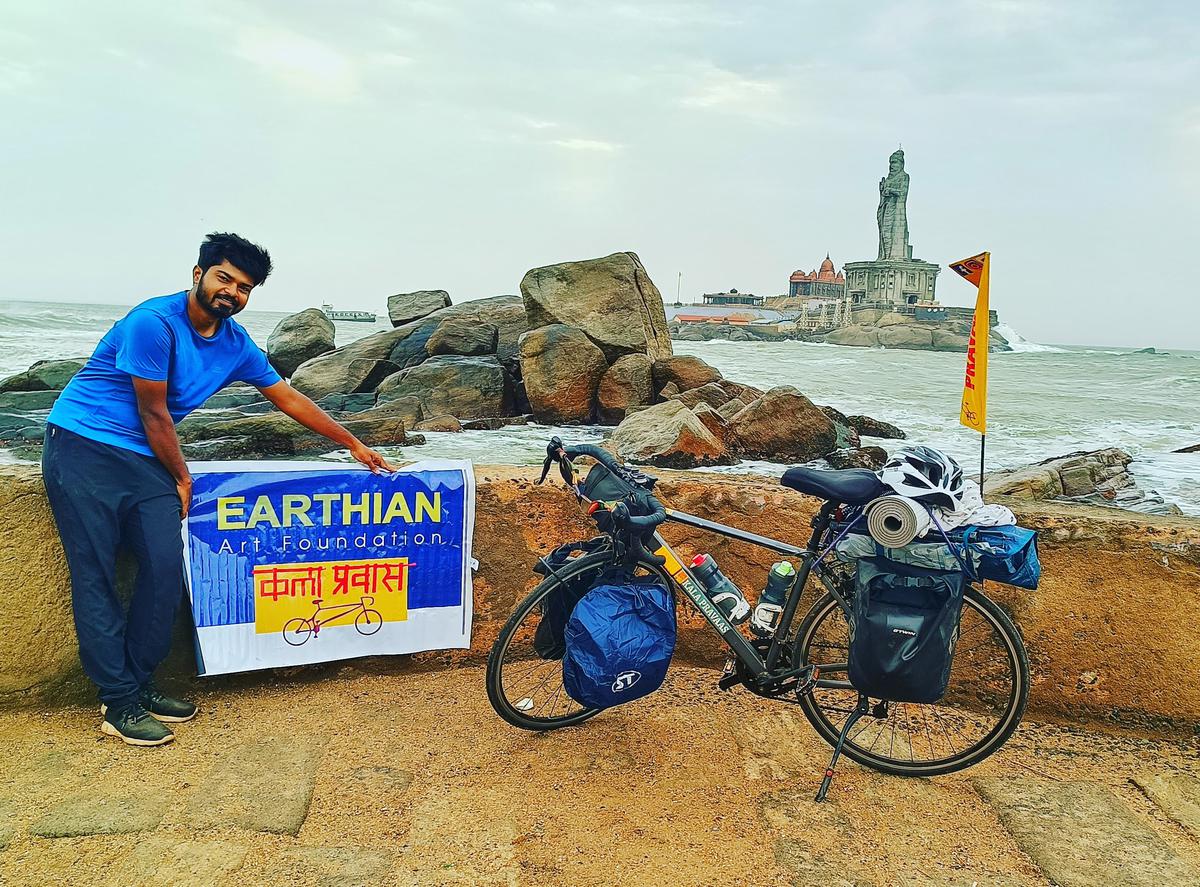Along the way, Prateek Jadhav traverses challenging routes to visit remote craft groups and document their arts and crafts traditions.
Along the way, Prateek Jadhav traverses challenging routes to visit remote craft groups and document their arts and crafts traditions.
Hidden amidst the ancient hinterland of India lies a treasure trove of folk art and culture that has been handed down over generations. These are the surviving chapters of the often unspecified history of Indian art forms. Today many of these are disappearing.
A 26-year-old artist from Mumbai is on a mission to document many of these traditional art forms through his solo cycling tour called Kala Pravas. Prateek Jadhav visited arts and crafts groups to travel the length and breadth of India from Mumbai in August 2019. In 2020, the pandemic halted his travels. In March this year, he resumed his journey with renewed vigor. Prateek has so far covered 18 states of North and South India and is now traveling through the South East Coast in the next phase of his mission.
Mumbai-based artist Prateek Jadhav, who is on a cycle tour across India to document Indian art forms. photo credit: special arrangement
“In our educational institutions, we learn extensively about the history of Western art, but little is involved about the history of traditional Indian folk arts and crafts.” Says Prateek, who has done his Bachelor of Fine Arts from Sir JJ School of Art, Mumbai with specialization in Sculpture. “I wanted to document the richness of Indian art forms hidden within forests and behind mountains, which are rarely mentioned on the Internet or in books,” he says. Prateek wants to turn this research project into an audio-visual document and dedicate a museum to it. He, along with four of his friends, started the Earthian Art Foundation in 2019 with the aim of setting up an art village and museum in Palu village in Maharashtra’s Thane district. “My idea is to showcase the history of art forms in the museum there,” he says.

Mumbai-based artist Prateek Jadhav, who is on a cycle tour across India to document Indian art forms. photo credit: special arrangement
It was his conscious choice to choose the bicycle as the mode of transport. “It is not only economical but also lets me travel faster and feel connected to the world. It gives me better access to remote craft groups that do not have proper roads,” says Pratik.
Through his travels, Prateek has been with the locals, eating simple traditional food and watching art forms flourish silently across India. From spending the night in simple cottages and opulent hill bungalows to meeting Aghori sadhus and sadhus, Prateek shares that every experience brought him closer to the roots of Indian art and culture. “At times, we do not understand each other’s language. But with the visual arts, words are not needed to express emotion,” he says.

Mumbai-based artist Prateek Jadhav, who is on a cycle tour across India to document Indian art forms. photo credit: special arrangement
He especially cherishes the time he spent with tribal communities in an inner village near Nanpur in Madhya Pradesh. “I reached a remote area after passing through challenging mountainous terrain. With no electricity, I had dinner in the dim light of a kerosene lamp with a tribal family, who was happy to host me. We slept under the stars. I could not see anything in the dark night. But as soon as the sun came out the next morning, I was stunned by the beauty all around me. It didn’t look like a cottage. I felt like I was standing in the gallery of an art museum! In front of me was a large, huge wall with paintings resembling life stories of people. This included animals, birds, insects, trees, and erotic figures, farming, brewing, and hunting. There were even two headed horses! The tribals sang songs in front of it, as if they were worshiping art. I came to know that the art was called Pithora,” recalls Pratik.
From manuscript paintings of Assam, terracotta horses of Tamil Nadu and Kalamkari at Srikalahasti to Masan art of North Bengal, bronze casting works of Kumbakonam and Chittara paintings from Karnataka, the symbol has been incorporated into many arts and crafts groups across the country. He is currently exploring the hinterland of Andhra Pradesh, cycling from Vijayawada to Visakhapatnam.